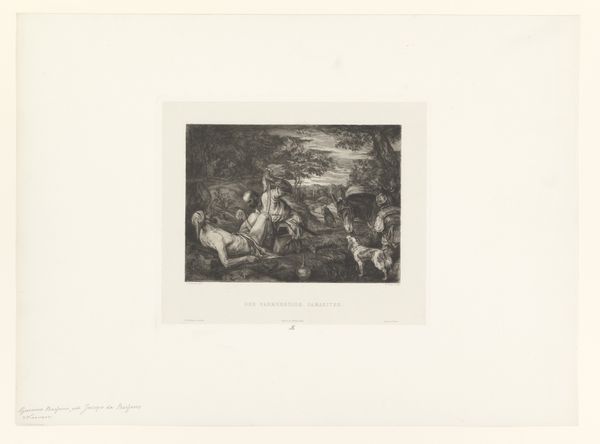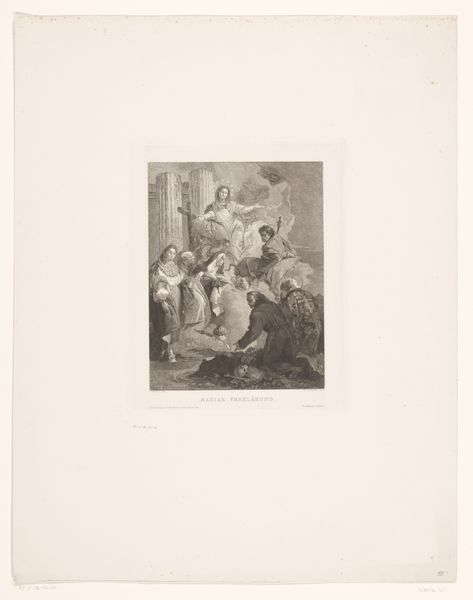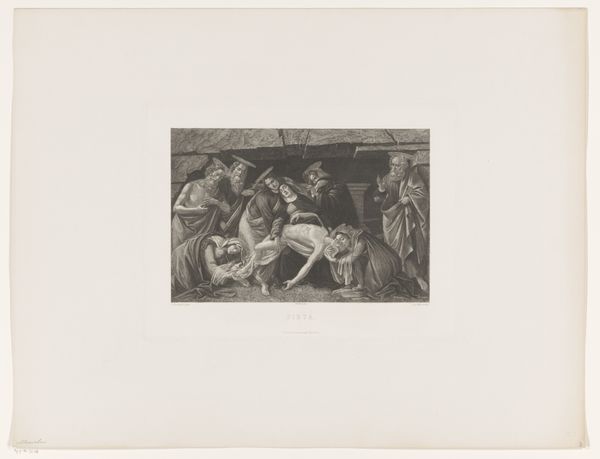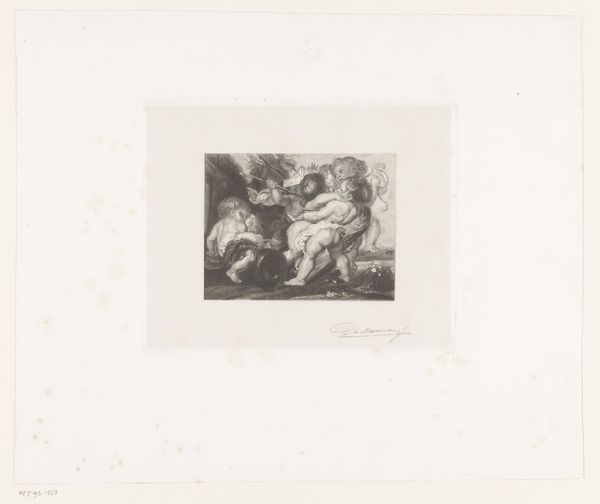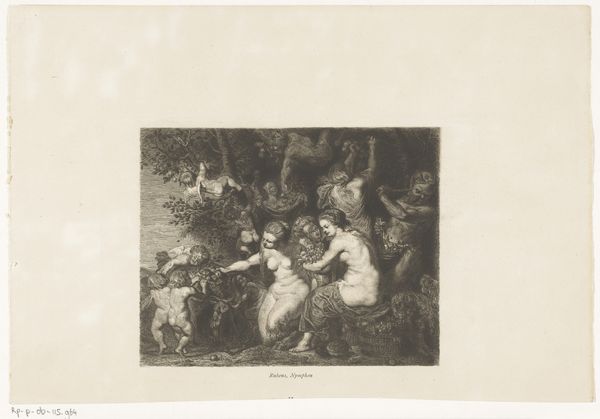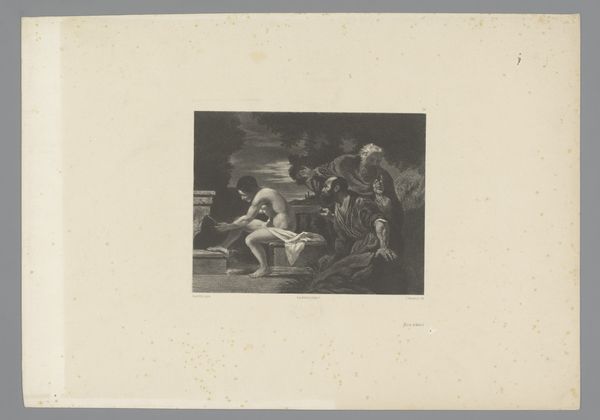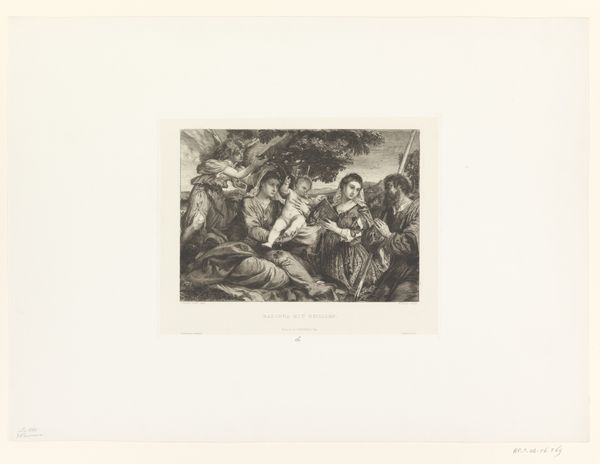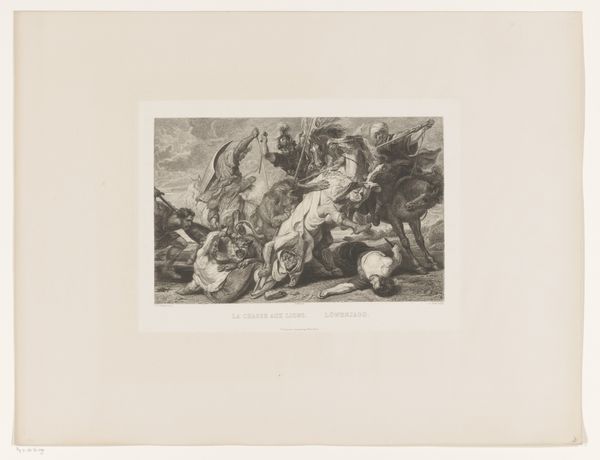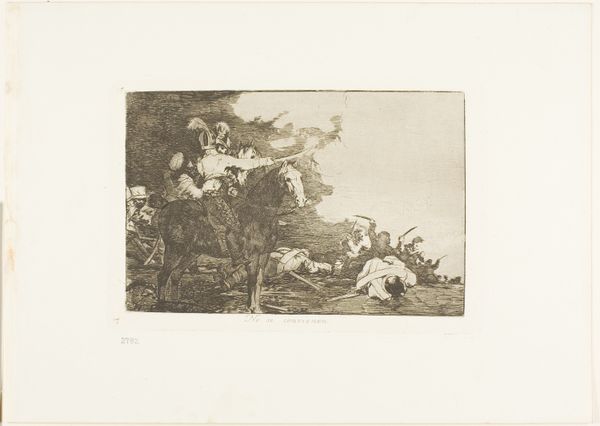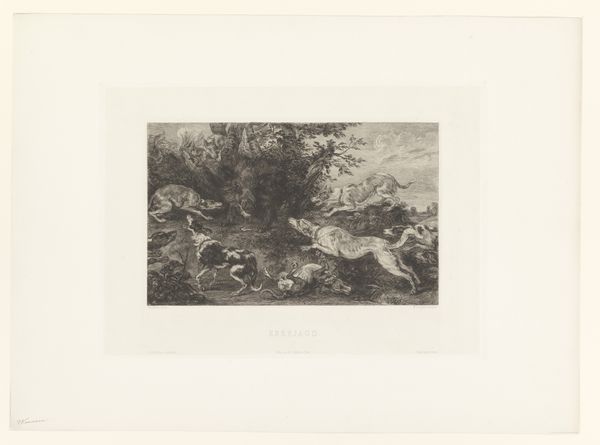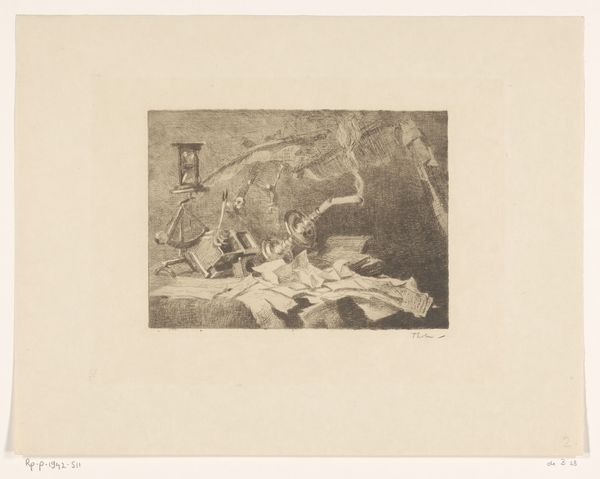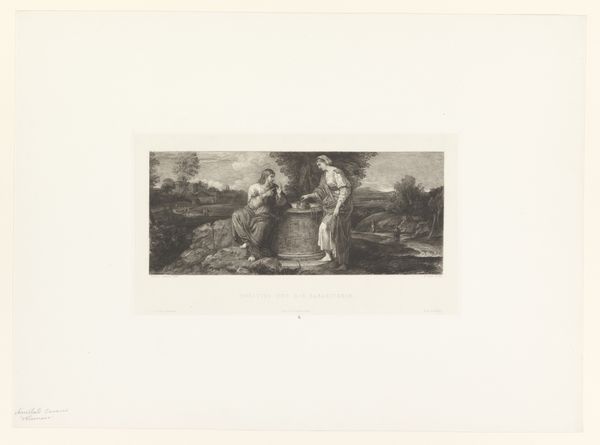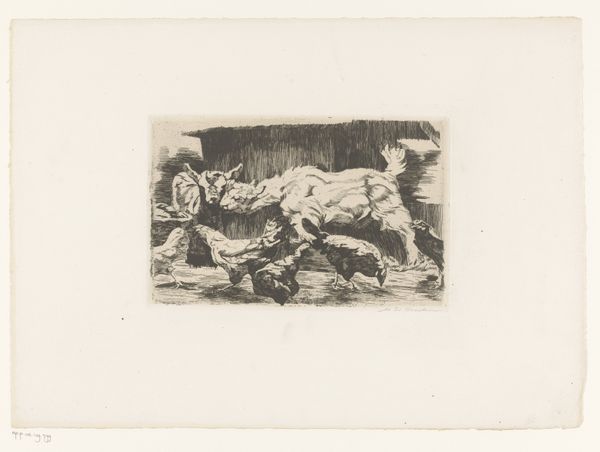
Dimensions: height 290 mm, width 389 mm
Copyright: Rijks Museum: Open Domain
Editor: This etching, "Stilleven met wild," created sometime between 1835 and 1899 by Johann Leonhard Raab, has such a dramatic, almost theatrical feel, with the arrangement of dead game and the intense shadows. It seems to reference an earlier Baroque sensibility. How might we interpret this piece through a historical lens? Curator: It's certainly evoking that dramatic Baroque aesthetic. Consider the societal role of "still life" at that time and its revival in the 19th century. Was it merely a display of skill, or something more? Etchings like these, reproduced for a wider audience, served to solidify class distinctions, representing the affluence and leisure associated with hunting. Editor: So it's not just about appreciating beauty; it is about celebrating wealth? What about the animals? Do you think their presentation has any socio-political undertones? Curator: Absolutely. The meticulous depiction of each animal—the types of fowl, the fur of the rabbit—speaks to a connoisseurship and ownership. It's also about dominance over nature. The printing and distribution also allowed the imagery and its meanings to spread widely through society, influencing how social classes saw themselves and each other. Think about who would have bought this print, where would they have displayed it, and how would viewers interpret this scene of bountiful death. Editor: I hadn't considered that. It reframes the way I perceive this genre painting. So it's not just an art piece, it is a socio-political document! Curator: Exactly! These prints circulated ideas and ideologies alongside aesthetics. Editor: Thanks! I definitely look at it in a new light. Curator: My pleasure. It is crucial to contextualize the artist's work, to avoid merely repeating existing assumptions and traditional interpretations of the piece.
Comments
No comments
Be the first to comment and join the conversation on the ultimate creative platform.
